Sustainability of Romanian Small and Medium Enterprises Using the Electronic Signature as a Driving Digital Tool
Abstract
:1. Introduction
2. Context and State of the Art
3. Materials and Methods
3.1. Data
3.2. Methods
3.3. A Summary of the Reviewed Literature in Support of the Used Methodology
4. Results
4.1. Preliminary Analysis
- Identification of the SME, according to field of activity and seniority: questions Q1, Q2, Q3.
- Frequency of use of digital signature: question Q4.
- Digital signature use cases: question Q5.
- Improving business through the use of digital signature: question Q6.
- SWOT analysis of the use of digital signature: questions Q7, Q8, Q9, Q10.
- The framing of policies in the area of digitalization in the trends regarding the Digital Single Market for Europe and in the trends seen in the National Recovery and Resilience Plan (PNRR): Q11, Q12.
- Identification of SMEs and share in total customers: question Q1, Q2.
- Categories of digital certificates requested and their validity: question Q3, Q4.
- Renewal of digital certificates: question Q5.
- New customers, SMEs in 2021: question Q6.
- Trends in the use of digital certificates: question Q7, Q8.
- The representatives of the companies that provided answers believe that the use of the digital signature offers at least one strong point (reducing costs, saving time, improving relations with customers and suppliers, protecting the environment, saving physical space), as follows:
- ○
- The majority (over 60%) appreciate all the strengths presented in the questionnaire.
- ○
- Over 16% appreciated only one strong point (and of these, half appreciated only saving time, and one fifth appreciated only cost reductions).
- Weaknesses are identified as at least one of the following: lack of information, lack of necessary equipment and lack qualified staff, as follows:
- ○
- Half gave a single answer (of which almost two thirds identified lack of information and almost 14% identified lack of qualified staff).
- ○
- More than one third identified as weak points both lack of necessary equipment and lack of qualified staff, which shows that investment must be made in both equipment and staff qualifications.
- The identified opportunities are valued as at least one of the elements: improving the image of the company, improving the digital skills of employees, cost reduction and attracting new customers and suppliers from online, as follows:
- ○
- Over 21% gave a single answer (of which two thirds chose improving the digital skills of employees).
- ○
- Almost 60% appreciate, among other opportunities, improving the image of the company and attracting new customers and suppliers from online (that is, those opportunities that “help” increase trust in the company among customers and suppliers).
- The threats to SMEs regarding the use of digital signature refer to one of: use of digital signature by unauthorized persons, modification of electronically signed documents by unauthorized persons and loss of electronic archives with electronically signed document, as follows:
- ○
- At least 60% of respondents chose at least one of the threats.
- ○
- Over 40% chose only one threat, and of these two thirds considered loss of electronic archives with electronically signed documents to be a threat.
4.2. Fundamental Research
- improving the activity
- expanding the company by using non-refundable funds
- expanding the market in the EU and in the world.
5. Discussion
5.1. Digitalization of SMEs by Means of a Digital Tool: The Electronic Signature
5.2. Trust Service Providers’ Perspective on SME Digitalization
- The most requested digital certificates (see Figure 12) by SMEs are those for the digital signature, valid for one year (users choose the shortest validity period probably for the following reasons: distrust regarding the possibility of changing the conditions, reducing costs, etc.)
- Only approximately a quarter of SME customers request digital certificates valid for two or three years.
- Renewal of certificates is requested by about three quarters of the users (probably the remaining 25% suspend their activity or turn to other providers).
- In 2021, almost half were new SME customers. This fact was also due to the COVID-19 pandemic, the digitization of services offered by public institutions, digital services offered by banks, access to non-refundable financing [65], and using digital tools such as digital signatures (submission of documentation had to be digitally signed).
5.3. Sustainability of SMEs through Digitalization
6. Conclusions
- Romanian SMEs are aware of the EU’s tendency to build a single digital market as well as the importance of accessing this market; however, only half of the SMEs consider creating the conditions (elaboration and implementation of policies in this sense) to penetrate this market.
- The barriers to digitalization, reported by half of SMEs, are lack of information on digital tools, lack of equipment (therefore lack of financial resources), and lack of qualified human resources. A SWOT analysis on the use of digital tools (of which we chose for our study the digital signature) reveals that SMEs are mostly, however, aware of the importance and the advantages of using the digital signature.
- Romanian SMEs are motivated to digitalize, to use digital tools, from the point of view of digital signature providers in the Romanian market, especially since 2021 brought 50% more new SME customers. The motivation to go digital comes, on the one hand, from the existing trend at the EU level but also from the cases where they have to use digital tools (for example, digital signature): for access to financing offered by the state (for example, PNRR) and in the relationship with public institutions.
- The sustainable development of Romanian SMEs is achieved through digitalization, but it is a way of thinking and action of only 60% of SMEs, who see digitalization as a way to protect the environment, to reduce costs, and to reduce consumption of resources.
Author Contributions
Funding
Institutional Review Board Statement
Informed Consent Statement
Data Availability Statement
Conflicts of Interest
References
- White, M.A. Sustainability: I know it when I see it. Ecol. Econ. 2013, 86, 213–217. [Google Scholar] [CrossRef]
- Virtanen, P.K.; Siragusa, L.; Guttorm, H. Introduction: Toward more inclusive definitions of sustainability. Curr. Opin. Environ. Sustain. 2020, 43, 77–82. [Google Scholar] [CrossRef]
- Khrais, L.T.; Alghamdi, A.M. Factors That Affect Digital Innovation Sustainability among SMEs in the Middle East Region. Sustainability 2022, 14, 8585. [Google Scholar] [CrossRef]
- Nichifor, E.; Lixăndroiu, R.C.; Maican, C.I.; Sumedrea, S.; Chițu, I.B.; Tecău, A.S.; Brătucu, G. Unlocking the Entrepreneurial State of Mind for Digital Decade: SMEs and Digital Marketing. Electronics 2022, 11, 2358. [Google Scholar] [CrossRef]
- Malesev, S.; Cherry, M. Digital and Social Media Marketing—Growing Market Share for Construction SMEs. Constr. Econ. Build. 2021, 21, 65–82. [Google Scholar] [CrossRef]
- Mamatzhonovich, O.D.; Khamidovich, O.M.; Esonali o’g’li, M.Y. Digital economy: Essence, features and stages of development. Acad. Globe Inderscience Res. 2022, 3, 355–359. [Google Scholar]
- European Commission. The Digital Europe Programme. Available online: https://digital-strategy.ec.europa.eu/en/activities/digital-programme (accessed on 13 January 2023).
- Döhring, B.; Hristov, A.; Maier, C.; Roeger, W.; Thum-Thysen, A. COVID-19 acceleration in digitalisation, aggregate productivity growth and the functional income distribution. Int. Econ. Econ. Policy 2021, 18, 571–604. [Google Scholar] [CrossRef]
- Build Back Better. Available online: https://buildbackbetter.co.nz/about-us/ (accessed on 19 January 2023).
- Mukesh Kumar, M. The World after COVID-19 and Its Impact on Global Economy, ZBW—Leibniz Information Centre for Economics, Kiel, Hamburg. 2020. Available online: https://hdl.handle.net/10419/215931 (accessed on 27 July 2023).
- Kramer, A.; Kramer, K.Z. The potential impact of the COVID-19 pandemic on occupational status, work from home, and occupational mobility. J. Vocat. Behav. 2020, 119, 103442. [Google Scholar] [CrossRef]
- Borek, D.; Puciato, D. Extraordinary and Unavoidable Circumstances in Tourism under COVID-19 and Post Pandemic Times—Casus Poland as Example of Sustainability Management. Sustainability 2023, 15, 2416. [Google Scholar] [CrossRef]
- Donthu, N.; Gustafsson, A. Effects of COVID-19 on business and research. J. Bus. Res. 2020, 117, 284–289. [Google Scholar] [CrossRef]
- Härmand, K. Digitalisation before and after the COVID-19 crisis. ERA Forum 2021, 22, 39–50. [Google Scholar] [CrossRef]
- Suciu, A.-D.; Tudor, A.I.M.; Chițu, I.B.; Dovleac, L.; Brătucu, G. IoT Technologies as Instruments for SMEs’ Innovation and Sustainable Growth. Sustainability 2021, 13, 6357. [Google Scholar] [CrossRef]
- Maniu, I.; Costache, C.; Dumitraşcu, D.-D. Adoption of Green Environmental Practices in Small and Medium-Sized Enterprises: Entrepreneur and Business Policies Patterns in Romania. Sustainability 2021, 13, 4968. [Google Scholar] [CrossRef]
- Journeault, M.; Perron, A.; Vallières, L. The collaborative roles of stakeholders in supporting the adoption of sustainability in SMEs. J. Environ. Manag. 2021, 287, 112349. [Google Scholar] [CrossRef]
- Ogrean, C.; Herciu, M. Romania’s SMEs on the Way to EU’s Twin Transition to Digitalization and Sustainability. Stud. Bus. Econ. 2021, 16, 282–295. [Google Scholar] [CrossRef]
- Rivza, B.; Kruzmetra, M.; Gudele, I.; Foris, D. Digitalization as an essential growth factor contributing in SME development (experience of Latvia and Romania). Agron. Res. 2019, 17, 261–270. [Google Scholar] [CrossRef]
- Ilcus, A.M. Impact of digitalization in business world. Rev. Manag. Comp. Int. 2018, 19, 350–358. [Google Scholar]
- Yu, W.; Huang, H.; Kong, X.; Zhu, K. Can Digital Inclusive Finance Improve the Financial Performance of SMEs? Sustainability 2023, 15, 1867. [Google Scholar] [CrossRef]
- ZF 15 Minutes with a Contractor. Alexandru Luca, Mobile Advisor Manager Cybersecurity certSIGN: Working from Home Is More Productive and Brings an Advantage to Companies. Available online: https://www.zf.ro/zf-15-minute-cu-un-antreprenor/zf-15-minute-cu-un-antreprenor-alexandru-luca-mobile-advisor-manager-19444947 (accessed on 7 February 2023).
- Titov, V.; Shust, P.; Dostov, V.; Leonova, A.; Krivoruchko, S.; Lvova, N.; Guzov, I.; Vashchuk, A.; Pokrovskaia, N.; Braginets, A.; et al. Digital Transformation of Signatures: Suggesting Functional Symmetry Approach for Loan Agreements. Computation 2022, 10, 106. [Google Scholar] [CrossRef]
- Omrani, N.; Rejeb, N.; Maalaoui, A.; Dabic, M.; Kraus, S. Drivers of Digital Transformation in SMEs. IEEE Trans. Eng. Manag. 2022, 1–14. [Google Scholar] [CrossRef]
- Putritamara, J.A.; Hartono, B.; Toiba, H.; Utami, H.N.; Rahman, M.S.; Masyithoh, D. Do Dynamic Capabilities and Digital Transformation Improve Business Resilience during the COVID-19 Pandemic? Insights from Beekeeping MSMEs in Indonesia. Sustainability 2023, 15, 1760. [Google Scholar] [CrossRef]
- Telukdarie, A.; Dube, T.; Matjuta, P.; Philbin, S. The opportunities and challenges of digitalization for SME’s. Procedia Comput. Sci. 2023, 217, 689–698. [Google Scholar] [CrossRef]
- Antonescu, D. Impact of COVID-19 pandemic crisis on business activities in Romania in 2020. Rev. Romana Econ. 2020, 51. Available online: http://www.revecon.ro/articles/2020-2/2020-2-8.pdf (accessed on 27 July 2023).
- Sepashvili, E. Digital Chain of Contemporary Global Economy: E-Commerce through E-Banking and E-Signature. Econ. Aziend. Online 2020, 11, 239–249. [Google Scholar] [CrossRef]
- Al-Emran, M.; Griffy-Brown, C. The role of technology adoption in sustainable development: Overview, opportunities, challenges, and future research agendas. Technol. Soc. 2023, 73, 102240. [Google Scholar] [CrossRef]
- Jiménez, A.; Yahiaoui, D.; Zhang, C.; Jiang, C. Sustainable International Management: Research in Global Culture and Leadership Development. Sustainability 2023, 15, 2739. [Google Scholar] [CrossRef]
- Krajčo, K.; Habánik, J.; Grenčíková, A. New technology impact on the Sustainable Development. Eng. Econ. 2019, 30, 41–49. [Google Scholar] [CrossRef]
- Bhutani, S.; Paliwal, Y. Digitalization: A step towards sustainable development. OIDA Int. J. Sustain. Dev. 2015, 8, 11–24. [Google Scholar]
- Clark, W.; Lund, H. Sustainable development in practice. J. Clean. Prod. 2007, 15, 253–258. [Google Scholar] [CrossRef]
- European Environment Agency. About Sustainability Transitions. Available online: https://www.eea.europa.eu/themes/sustainability-transitions/intro (accessed on 13 January 2023).
- Prisecaru, P. Challenges of the fourth industrial revolution. Knowledge Horizons. Economics 2016, 8, 57. [Google Scholar]
- Matt, D.T.; Rauch, E. SME 4.0: The role of small-and medium-sized enterprises in the digital transformation. In Industry 4.0 for SMEs: Challenges, Opportunities and Requirements; Springer: Berlin/Heidelberg, Germany, 2020; pp. 3–36. Available online: https://library.oapen.org/bitstream/handle/20.500.12657/22857/1007304.pdf?sequence=1#page=33 (accessed on 27 July 2023).
- World Digital Competitiveness Ranking. 2022. Available online: https://www.imd.org/centers/wcc/world-competitiveness-center/rankings/world-digital-competitiveness-ranking/ (accessed on 27 July 2023).
- Brodny, J.; Tutak, M. Digitalization of Small and Medium-Sized Enterprises and Economic Growth: Evidence for the EU-27 Countries. J. Open Innov. Technol. Mark. Complex. 2022, 8, 67. [Google Scholar] [CrossRef]
- European Commission. The Digital Economy and Society Index (DESI). Available online: https://digital-strategy.ec.europa.eu/ro/policies/desi (accessed on 28 January 2023).
- EU Digital Strategy. Available online: https://eufordigital.eu/discover-eu/eu-digital-strategy/ (accessed on 27 July 2023).
- Ovidiu Nicolescu, O.N. Carta Albă a IMM-urilor din România; Pro Universitaria: Bucharest, Romania, 2022; ISBN 978-6-06-261624-3. [Google Scholar]
- Santosa, A.A.; Prasetyo, Y.T.; Alamsjah, F.; Redi, A.A.N.P.; Gunawan, I.; Putra, A.R.; Persada, S.F.; Nadlifatin, R. How the COVID-19 Pandemic Affected the Sustainable Adoption of Digital Signature: An Integrated Factors Analysis Model. Sustainability 2022, 14, 4281. [Google Scholar] [CrossRef]
- The Green Page. The Abandonment of Paper Invoices and the Introduction of Digital Signatures Eliminated 47 Tons of Carbon Generated by eMAG’s Delivery Activities. At the Level of Packaging, the Online Retailer Introduced Only Plastic Bags and Cardboard Boxes from Recycled and Recyclable Materials into the Circuit. Financial Daily Newspaper (Ziarul Financiar). Available online: https://www.zf.ro/companii/pagina-verde-renuntarea-facturile-hartie-introducerea-semnaturii-20778196 (accessed on 19 January 2023).
- SMEs Will Have 2 Billion Euros of Financing Available This Year. “Romania Is Going through One of the Best Periods in His-tory”. Financial Daily Newspaper (Ziarul Financiar). Available online: https://www.zf.ro/companii/analiza-zf-imm-urile-vor-avea-anul-acesta-la-dispozitie-finantari-de-21480834 (accessed on 19 January 2023).
- SMEs Can Obtain European Funding through PNRR to Implement Digital Transformation Solutions. Trans Sped: Digital Solutions Have Become a “Must-Have” for the Romanian Economy. Financial Daily Newspaper (Ziarul Financiar). Available online: https://www.zf.ro/banci-si-asigurari/imm-urile-pot-obtine-finantari-europene-prin-pnrr-pentru-a-21287308 (accessed on 19 January 2023).
- European Commission. Internal Market, Industry, Entrepreneurship and SMEs. Available online: https://single-market-economy.ec.europa.eu/smes/sme-definition_en (accessed on 27 July 2023).
- Previati, D.; Farina, V.; Lanciano, E. European small and medium-sized enterprises in the pandemic context: National recovery and resilience plans, SME challenges, and banking system role. Piccola Impresa/Small Bus. 2022. [Google Scholar] [CrossRef]
- European Commission. Regulation (EU) No 910/2014 of the European Parliament and of the Council of 23 July 2014 on Electronic Identification and Trust Services for Electronic Transactions in the Internal Market and Repealing Directive 1999/93/EC. Available online: http://data.europa.eu/eli/reg/2014/910/oj (accessed on 27 January 2023).
- Romanian Law no. 455/2001 Regarding the Electronic Signature. Parliament of Romania. Available online: https://legislatie.just.ro/Public/DetaliiDocument/29903 (accessed on 27 January 2023).
- Consumers in Europe—Facts and Figures. Eurostat. Available online: https://ec.europa.eu/eurostat/web/products-statistical-books/-/ks-39-01-134 (accessed on 28 January 2023).
- The Digital Economy and Society Index—Countries’ Performance in Digitalization. Available online: https://digital-strategy.ec.europa.eu/en/policies/countries-digitisation-performance (accessed on 28 January 2023).
- Nicolescu, O.; Nicolescu, C.; Petre, S.C.; Urîtu, D.; Samek, D.; Cristof, C. The White Paper of SMEs in Romania 2022; Pro Universitaria: Bucharest, Romania, 2022. [Google Scholar]
- Paradis, E.; O’Brien, B.; Nimmon, L.; Bandiera, G.; Martimianakis, M.A. Design: Selection of Data Collection Methods. J. Grad. Med. Educ. 2016, 8, 263–264. [Google Scholar] [CrossRef]
- Google Forms. Available online: https://www.google.com/forms/about/ (accessed on 28 January 2023).
- Titan, E.; Ghita, S.; Trandas, C. Applied Statistics; Meteor Press: Bucharest, Romania, 2005; ISBN 973-8355-17-6. [Google Scholar]
- SPSS Tutorials: Chi-Square Test of Independence. Available online: https://libguides.library.kent.edu/spss/chisquare (accessed on 27 July 2023).
- Băicuș, C. Applied Research. Available online: http://www.baicus.ro/MCS/Cercetarea_calitativa.pdf (accessed on 27 July 2023).
- Roman, A.; Rusu, V.D. Digital Technologies and the Performance of Small and Medium Enterprises. Stud. Bus. Econ. 2022, 17, 190–203. [Google Scholar] [CrossRef]
- Zhang, Q.; Li, Z.; Song, C. The Improvement of digital signature algorithm based on elliptic curve cryptography. In Proceedings of the 2nd International Conference on Artificial Intelligence, Management Science and Electronic Commerce (AIMSEC), Zhengzhou, China, 8–10 August 2011; IEEE: Piscataway, NJ, USA, 2011; pp. 1689–1691. [Google Scholar]
- European Union. EU Digital Single Market. Available online: https://eufordigital.eu/discover-eu/eu-digital-single-market/ (accessed on 28 January 2023).
- Romanian National Recovery and Resilience Plan. Romanian Government. Available online: https://mfe.gov.ro/pnrr/ (accessed on 28 January 2023).
- SPSS eTutor: DATA and SPSS. Available online: https://subjectguides.sunyempire.edu/c.php?g=659059&p=4626955 (accessed on 27 July 2023).
- Interpreting Chi Square Results in SPSS. Available online: https://ezspss.com/interpreting-chi-square-results-in-spss/ (accessed on 27 July 2023).
- Ratner, B. The correlation coefficient: Its values range between +1/−1, or do they? J. Target. Meas. Anal. Mark. 2009, 17, 139–142. [Google Scholar] [CrossRef]
- Micro-Grants Session II: New Beneficiaries, Eligible Costs and Applications Criteria. Available online: https://contabilul.manager.ro/a/26349/microgranturi-sesiunea-2-noii-beneficiari-cheltuieli-eligibile-si-conditii-de-aplicare.html (accessed on 27 July 2023).


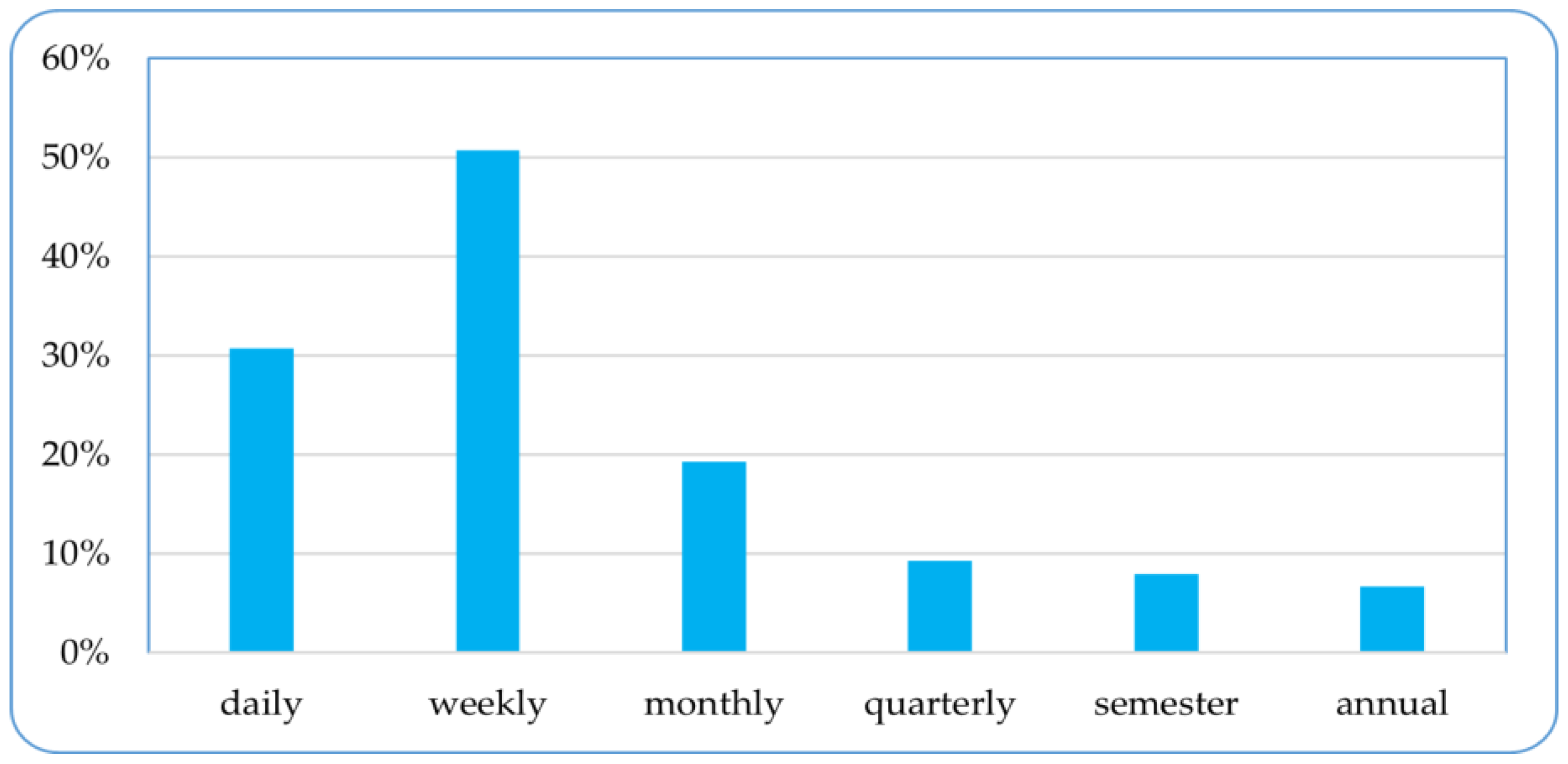
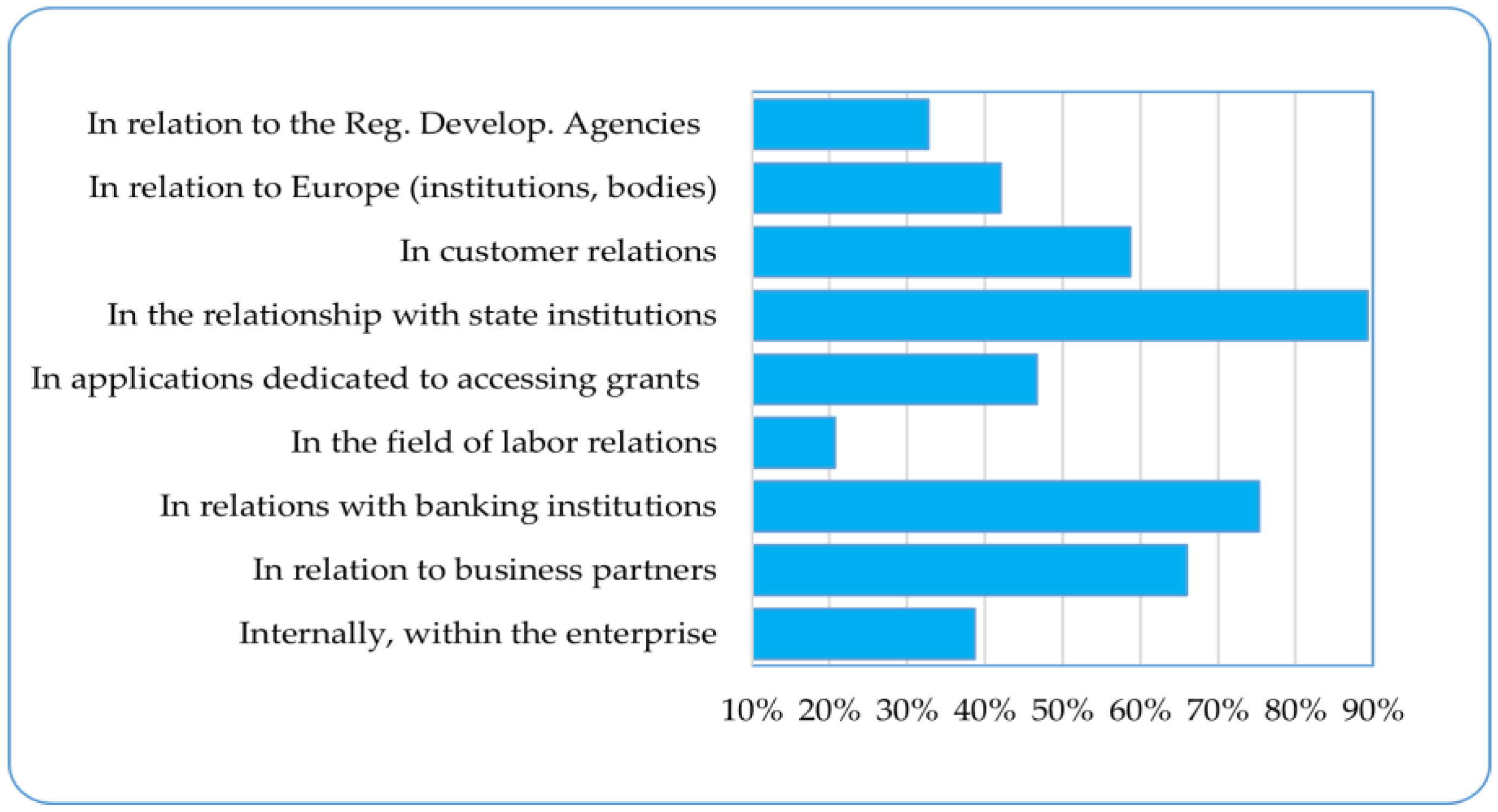
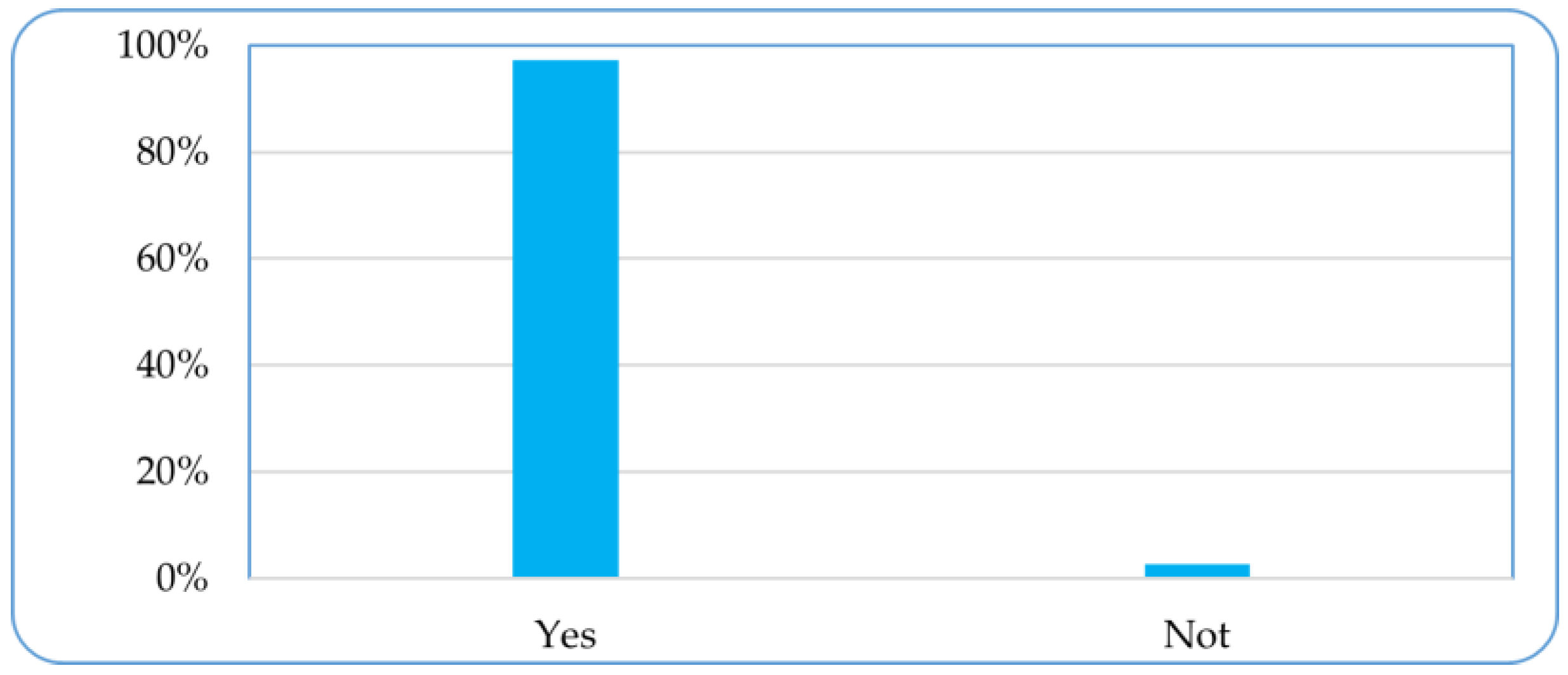
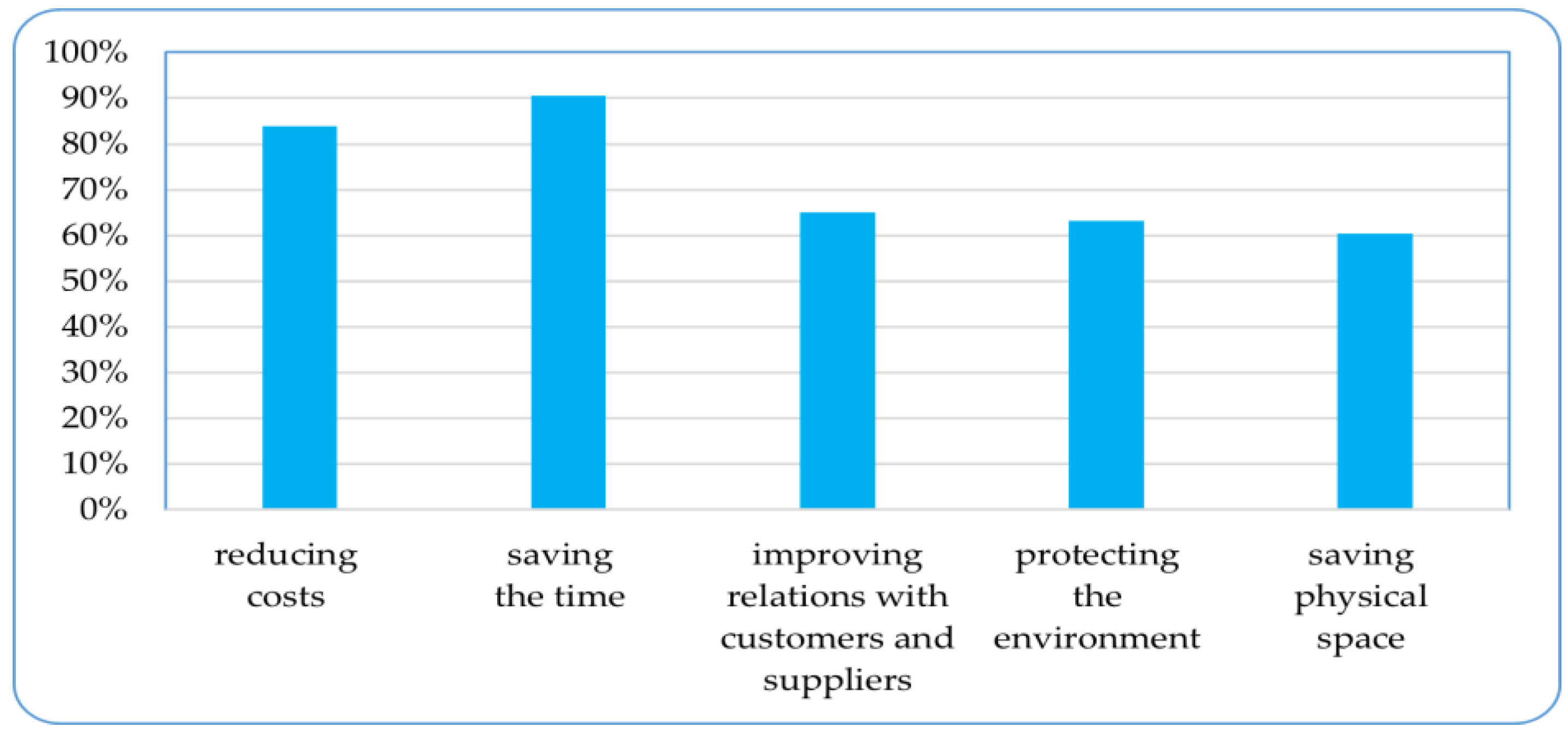




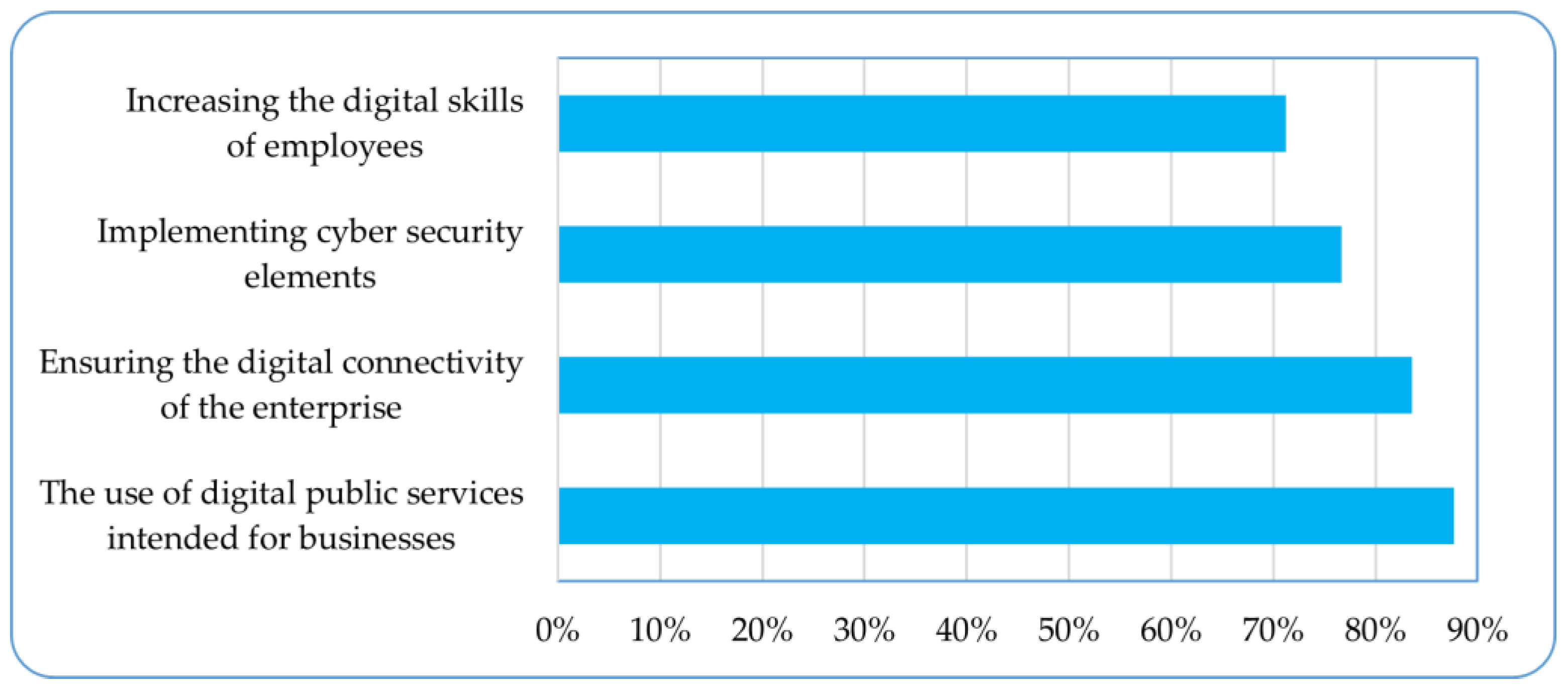


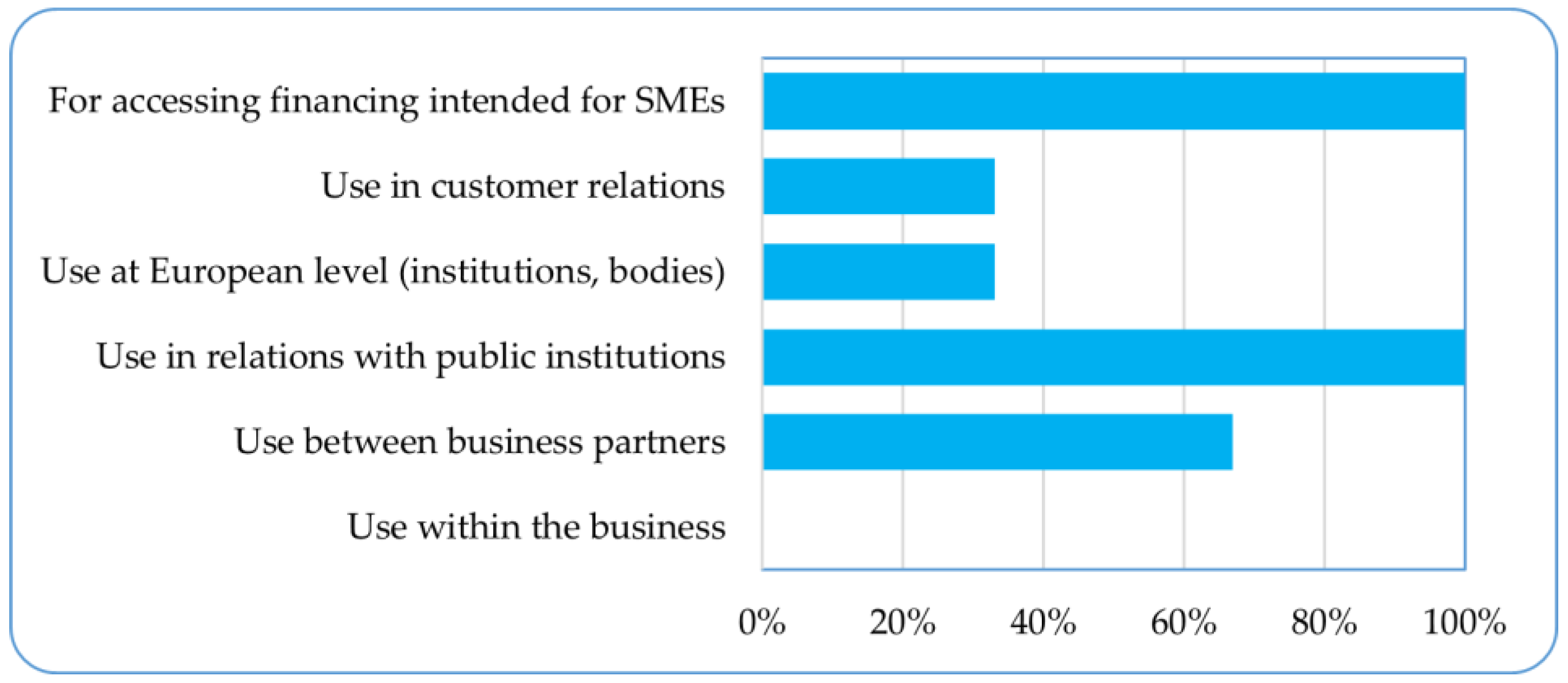
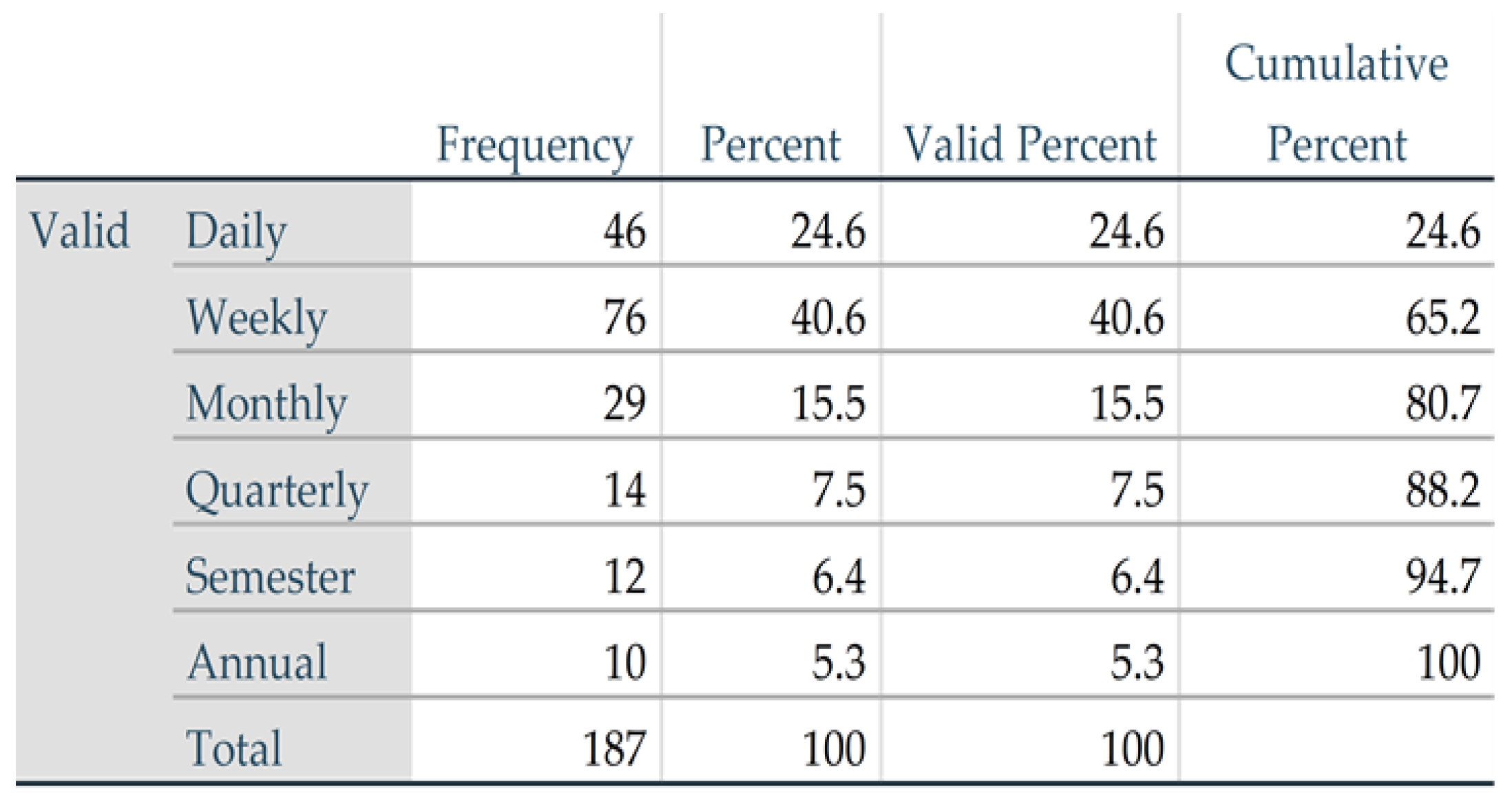
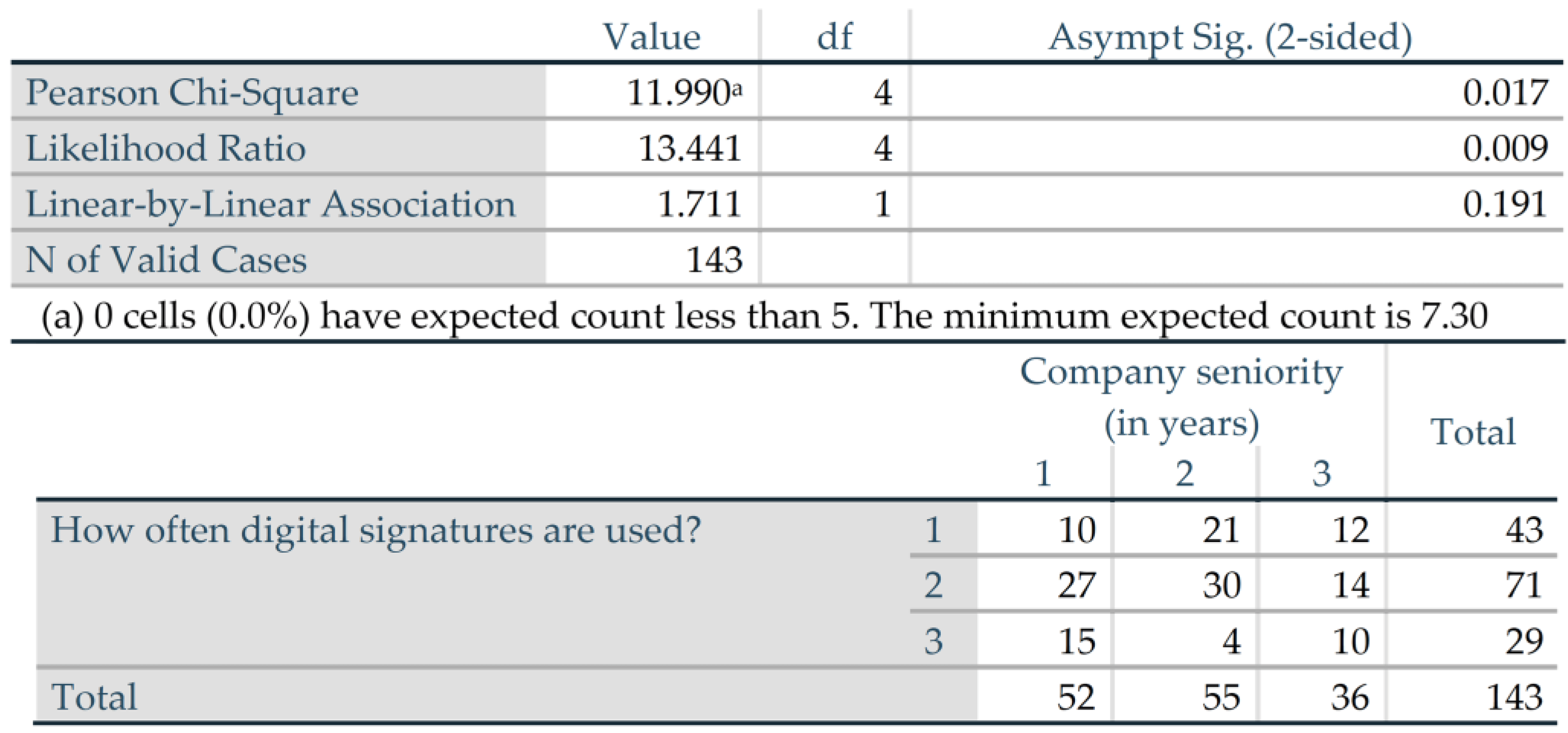
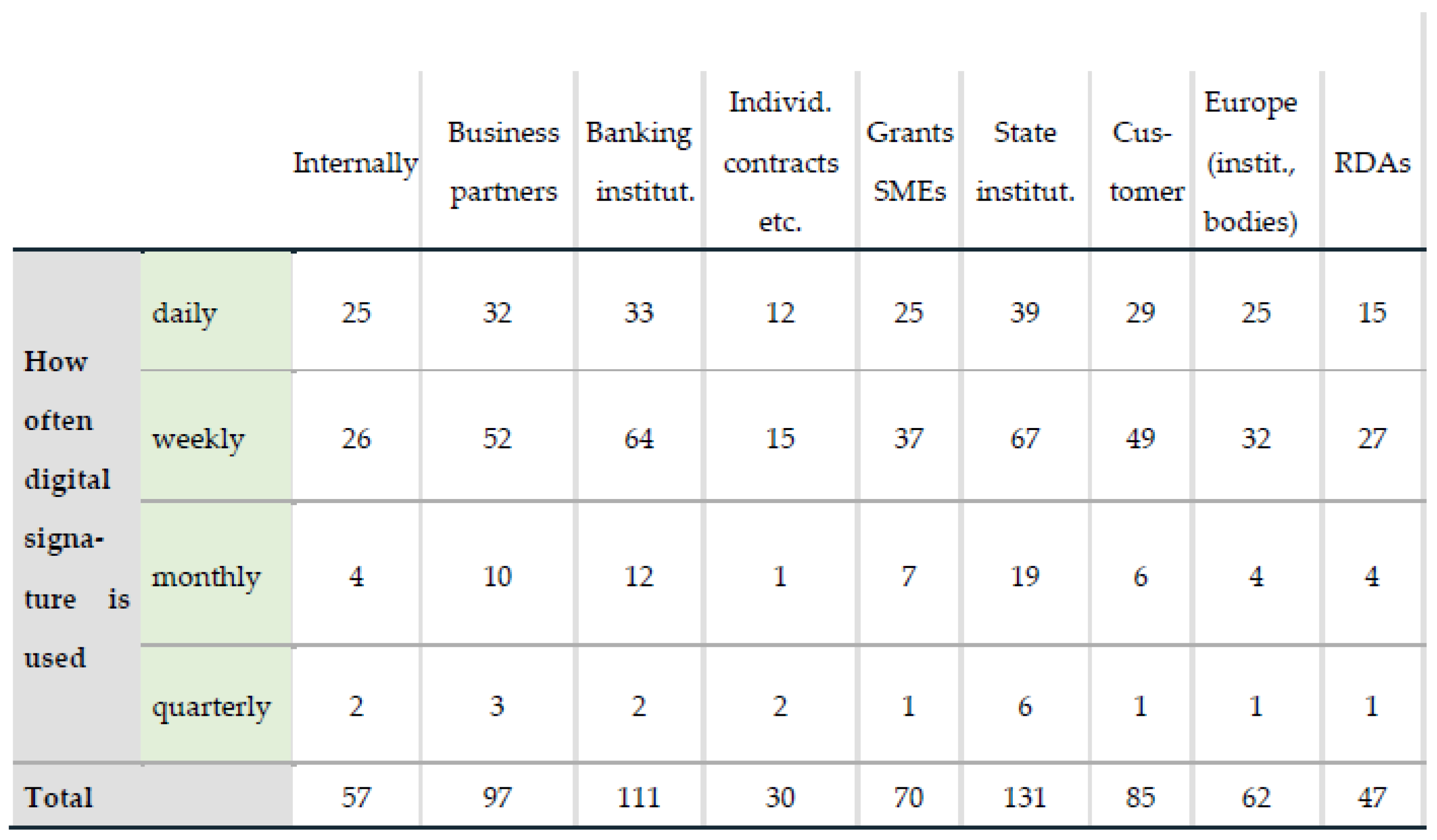
| Bibliographic Reference | Context | Identified Method | Details on the Relationship between SMEs–Digitalization–Digital Signature(s)–Sustainability |
|---|---|---|---|
| [3] | SMEs | Quantitative research | The planning and adoption by SMEs of a digitalization trend positively influences their sustainable development. |
| [8] | Generic organization | Literature review | If, at the end of the 90s, there were two main areas in the economy, a conventional sector and a digital one (which had just appeared), the COVID-19 pandemic facilitated the strong development of digital services (for example, e-commerce), and the creation of new digital services (for example. video conferencing and telework). The demand for digital services keeps growing today. For a rapid transition of the workforce to the new, highly digitized technological environment, the workforce must develop digital skills. Education and training policies, but also labor market policies, can support this swift transition to digitalization. |
| [13] | Generic organization | Literature review | Digital technologies used during the pandemic (online services, information-sharing platforms, etc.) have helped people stay connected and work together, and organizations to continue their businesses in a sustainable manner. |
| [15] | SMEs | Quantitative research | SMEs, to remain competitive and to have sustainable growth, must adapt to and adopt new technologies. Strategies and plans for sustainable development are needed, where digital technologies can be used to their full potential. |
| [16] | SMEs | Quantitative research | Among the policies mentioned by Romanian SME managers, in order to reduce the consumption of energy and resources for sustainable development, we identified: (1) reducing the amount of paper used, (2) reducing energy consumption, (3) transitioning to digitalization. Digitalization facilitates the reduction of waste, thus contributing to the increase in environmental sustainability. |
| [18] | SMEs | Literature review | The gaps between Romanian SMEs and EU-27 SMEs regarding the perception, attitudes and behavior regarding digitalization and sustainability are identified in this paper. A set of guidelines are presented to accelerate the transition of Romanian SMEs towards digitalization, and also towards sustainable development. |
| [19] | SMEs | Literature review | Romanian SMEs continue to progress in the field of digitalization. They obtain financial benefits from digitalization through the development of e-commerce services. However, there is a lack of IT specialists in the Romanian market and within the Romanian SMEs. |
| [20] | Generic organization | Literature review | The implementation of a digitalization plan and the use of digital technologies by enterprises can generate competitive advantages in the future. Digital transformation, at the macro-economic level, is currently a priority for Romania. |
| [23] | Generic organization | Literature review | The electronic signature is employed as a trust enforcer in the public sector, in corporations, non-profit organizations, and business in general. Concrete implementation guidelines and procedures and the application of best practices in this field are needed, especially since digital signature technology can be used in all economic sectors. |
| [24] | SMEs | Quantitative research | The adoption of digital technologies by SMEs is influenced by the technological and organizational context and less by the environment in which they operate. |
| [25] | SMEs | Quantitative research | The digital transformation of enterprises needs to be supported differently through specific policies and considering the particular details (e.g., the size of the enterprise, the human and educational/training resources). |
| [26] | SMEs | Literature review | The main obstacles to the digital transformation of SMEs are time, costs and resources. The proposed solution to the removal of these obstacles is the development of integrated systems that allow these companies faster access to digital technologies. |
| [28] | SMEs | Literature review | Digital technologies improve economic efficiency and reduce costs. The electronic signature is a modern way to enable trust and to speed up business processes, to quickly make agreements, to establish business partnerships, to make payments, and to conclude transactions without barriers. However, there is also much distrust in electronic processes in business and therefore individuals still use hand-signed, paper-based documents. The electronic signature is a tool that confirms the legal value of business operations carried out in the online environment. For SMEs, the electronic signature is a modern way to speed up business processes, and to transfer them to the online environment. The following were identified as difficulties in the implementation of the digital signature: the need for the existence of a physical infrastructure, the existence of appropriate software and hardware tokens, strict requirements regarding data security, skills and knowledge that users must have, appropriate attitudes and behaviors. |
| [32] | Generic organization | Literature review | The future belongs to those who prepare for it. The future also means digitalization of businesses. In this journey we need to stay connected and informed, which gives us the strength to succeed. Digitalization is a new stake in the future, which will help create a healthy economic and social environment, and will help society and businesses to develop sustainably. Virtual reality created through digitalization will generate sustainable growth and social inclusion. |
| [33] | Generic organization | Literature review | To create sustainable communities there must be policies and strategies, that is, a continuous public involvement. |
| [36] | Generic organization | Quantitative research | SMEs are important both for Europe’s and for the world economy. If large enterprises have the financial and human resources to implement a digitalization transition, SMEs are still in the early stages of adopting digital technologies. |
| [38] | SMEs | Quantitative research | A study is carried out on the level of digital maturity of the EU-27 countries. An EU priority is digitalization, as fast as possible, in all areas of business and citizens’ lives. Romania is mentioned among the countries with poor results regarding the digitalization of SMEs. Romanian SMEs that use digital technologies are fewer, compared to the EU-27 average. For example, electronic invoicing is used by only 17% of SMEs, compared to the EU-27 average of 35%. Investments in research and development are needed for SMEs to increase their level of digitalization. |
| [41] | SMEs | Quantitative research | Romanian SMEs use software tools for business operations (management programs, accounting programs, etc.), electronic signatures, security, sales, communication, etc. The second most commonly used software by Romanian SMEs is that for digital signature. Romanian SMEs in the field of tourism use the electronic signature most often within their activity. |
| [42] | Generic organization | Quantitative research | The digital signature has been widely accepted and used during the COVID-19 pandemic. Digital signature providers must take into account the interest and experience of consumers in its use. It has been found that there is a correlation between consumer attitude, behavior, legislation, information obtained and the use of the digital signature. |
| [58] | SMEs | Literature review | The negative effects of the pandemic on companies, the vast majority of them being SMEs, have made us rethink the way we do business. The digitalization of SMEs is crucial, especially since these enterprises represent the economic development engine of each country. The level of digitalization of SMEs in the EU countries is increasing. Around 10% of SMEs use advanced digital technologies. As identified, the barriers facing faster digitalization are the lack of knowledge and skills in the digital field or the lack of financial resources to own and use digital technologies. Digitalization contributes to increasing the performance of SMEs. |
| What Are the Cases in Which an SME Uses the Digital Signature | Representativeness Error | Error Limit | Lower Limit | Superior Limit |
|---|---|---|---|---|
| Internally, within the company, for the transmission of documents with legal value | 0.040955 | 0.080272 | 0.3277 | 0.4883 |
| In relation with business partners, for online sending of documents, contracts, etc. | 0.038541 | 0.075541 | 0.6145 | 0.7655 |
| In relation with banking institutions | 0.034002 | 0.066643 | 0.7224 | 0.8556 |
| Upon conclusion of individual employment contracts, additional documents, and other documents in the field of labor relations and occupational safety and health | 0.034407 | 0.067438 | 0.1506 | 0.2854 |
| In applications dedicated to accessing grants for SMEs | 0.041667 | 0.081667 | 0.4183 | 0.5817 |
| In relation with the state institutions: the National Fiscal Administration Agency (ANAF), the National Health Insurance House (CNAS), the Territorial Labor Inspectorate (ITM), the National Trade Register Office (ONRC), etc. | 0.021262 | 0.041674 | 0.8883 | 0.9717 |
| In relation with customers | 0.040842 | 0.08005 | 0.5190 | 0.6790 |
| In relation with European Union (institutions, bodies, agencies, etc.) | 0.041335 | 0.081016 | 0.3560 | 0.5180 |
| In relation to the Regional Development Agencies (RDAs) | 0.039214 | 0.07686 | 0.2541 | 0.4079 |
Disclaimer/Publisher’s Note: The statements, opinions and data contained in all publications are solely those of the individual author(s) and contributor(s) and not of MDPI and/or the editor(s). MDPI and/or the editor(s) disclaim responsibility for any injury to people or property resulting from any ideas, methods, instructions or products referred to in the content. |
© 2023 by the authors. Licensee MDPI, Basel, Switzerland. This article is an open access article distributed under the terms and conditions of the Creative Commons Attribution (CC BY) license (https://creativecommons.org/licenses/by/4.0/).
Share and Cite
Borcoși, C.-A.; Borcoși, I.; Marian, M.; Cusman, A.; Ionică, D. Sustainability of Romanian Small and Medium Enterprises Using the Electronic Signature as a Driving Digital Tool. Sustainability 2023, 15, 15806. https://doi.org/10.3390/su152215806
Borcoși C-A, Borcoși I, Marian M, Cusman A, Ionică D. Sustainability of Romanian Small and Medium Enterprises Using the Electronic Signature as a Driving Digital Tool. Sustainability. 2023; 15(22):15806. https://doi.org/10.3390/su152215806
Chicago/Turabian StyleBorcoși, Corina-Ana, Ilie Borcoși, Marius Marian, Adelin Cusman, and Dragoș Ionică. 2023. "Sustainability of Romanian Small and Medium Enterprises Using the Electronic Signature as a Driving Digital Tool" Sustainability 15, no. 22: 15806. https://doi.org/10.3390/su152215806
APA StyleBorcoși, C.-A., Borcoși, I., Marian, M., Cusman, A., & Ionică, D. (2023). Sustainability of Romanian Small and Medium Enterprises Using the Electronic Signature as a Driving Digital Tool. Sustainability, 15(22), 15806. https://doi.org/10.3390/su152215806






